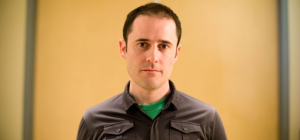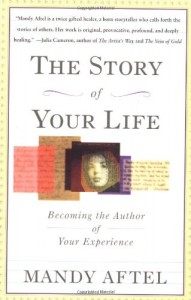An amazing Origin Story: Vivienne, Audrey and Make a Stand Lemon-aid
 Get ready for a great example of an Origin Story.
Get ready for a great example of an Origin Story.
This is one of the most important stories to have in your storytelling quiver, especially if you are a solopreneur with a big message. It’s also important for leaders of organizations to have both their personal Origin Story and an organizational Origin Story (like Ari Weinzweig of Zingerman’s does).
This story is also a great example of a story that can be used to challenge someone’s self-limiting belief about being “too small” to make a difference in this big, complex world.
So, here’s what happened…
While walking around the exhibitor area of the Wisdom 2.0 conference in San Francisco recently, I stumbled upon a sight I had never encountered at a conference: a brightly colored lemonade stand.
My gaze also encountered another unfamiliar exhibition hall sight: a princess in a princess gown.
The princess’s name, I discovered, was Vivienne Harr. With her was Tony Daniel, a big magnetically cheerful guy. I soon learned that Tony was the dad of Vivienne’s co-founder, Audrey Daniel.
I asked him about the story of Make a Stand Lemon-aid.
I was so taken by what he shared, I asked him and Vivienne if I could do a recording of them telling their story.
After you watch the video, I’ll share with you some thoughts about how to use what you saw, heard, and experienced.
Here are a few storytelling lessons and applications:
This is a great example of a brief version of an Origin Story.
Notice how Tony was able to capture the origin of Make a Stand Lemonade and the purpose behind it, in about a minute. Whether you present at an event or talk with someone at your vendor booth, you infuse your message with more meaning—and you make it more fascinating—when you describe briefly the story behind why your business exists, the story behind why you do what you do. You also make it easier for people to bond to you when they know your story.
Telling your story begins the Know, Like, Trust process critical to selling your products, services, and ideas.
So…to put this into practice, start working on your Origin Story. For another example of an Origin Story, you can read mine.
This is a great example of a story you can to use to challenge someone’s limiting perspectives, especially the perspective of “I’m too small” or “I’m just a ‘little person’…I can’t make a difference in this big, complex world.”
The Make a Stand Lemon-aid story is a great example of what I call a Perspective Shift story, which is one of the most powerful story genres you can use when coaching or mentoring someone.
With Perspective Shift stories, rather than simply challenging someone’s limiting belief or perspective—which only triggers resistance and defensiveness—you can instead tell them a story that offers a different perspective. I especially like Vivienne and the Make a Stand folk’s story because it is both sweet and charming and…incredibly inspiring.
Think about it, how can you convince yourself you can’t make a difference in the world as an adult, when you hear how two adorable little girls have already made a difference and they’re not even teenagers.
It kind of takes away our excuses.
So how can you apply this in your work? Start noticing and collecting stories of “average” people making a difference, “regular” people doing big things.
Then, when you’re working with someone who believes they are too “small” (or old, or not well educated enough, etc) to make a difference, share with them one or more of these stories.
Doing so can help shift their emotional state and perspective from “I can’t” to “I can.”
If you work inside an organization and your work involves cultivating employee engagement, notice the question I asked Vivienne.
Even though Vivienne’s story is not an example of a story you would use to foster employee engagement, the question I asked her should be included in the stories you use to show employees how the work they do makes a difference.
You want to ask the story teller “How did that make you feel?” along with “What did that mean to you?” for key Moments of Truth in the experience they’re telling you about. Doing this guides the speaker to share at a more personal, intimate level. This helps the listener bond with the speaker.
It helps them form an empathetic connection with the speaker, because they are hearing about the speaker’s inner world. Although Vivienne’s story is not an example of a customer story, asking the question I asked her, along with “What did that mean to you?” question, makes customer stories more meaningful to employees. Haring how customers felt when an employee did X or because the company did Y, and hearing what it meant to the customer, helps employees understand the impact of their work at a deeper, more emotional, more visceral level. Hearing about the impact their work makes helps infuse employees’ work with greater meaning and purpose, which is a fundamental driver of employee motivation.
Research by Dr. Adam Grant, of Wharton Business School has shown that when employees are directly exposed to customer stories about the difference their work makes, it translates into major increases in productivity. In fact, in one research study, exposing employees to a five minute customer story resulted in a 400% increase in revenues generated.
So…if you don’t have one, get crackin’ on that Origin Story.
You can learn more about the Make a Stand story and the good they doing at their site.
Here’s their video:
Make a Stand Lemon-aid: “Hope in a Bottle” from Vivienne Harr on Vimeo.



